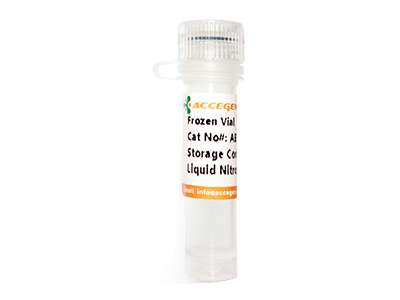-
Happy Holidays from AcceGen! Orders placed during Dec 22–Jan 2 will be processed and shipped after operations resume. Please plan ahead.
Featured Products
- In-Stock Tumor Cell Lines
- Human Orbital Fibroblasts
- Human Microglia
- Human Pulmonary Alveolar Epithelial Cells
- Human Colonic Fibroblasts
- Human Type II Alveolar Epithelial Cells
- Human Valvular Interstitial Cells
- Human Thyroid Epithelial Cells
- C57BL/6 Mouse Dermal Fibroblasts
- Human Alveolar Macrophages
- Human Dermal Fibroblasts, Adult
- Human Lung Fibroblasts, Adult
- Human Retinal Muller Cells
- Human Articular Chondrocytes
- Human Retinal Pigment Epithelial Cells
- Human Pancreatic Islets of Langerhans Cells
- Human Kidney Podocyte Cells
- Human Renal Proximal Tubule Cells
Primary Cells
Explore Products




 COR-L105 is a human non-small cell lung cancer (NSCLC) cell line established from the pleural effusion of a Caucasian male patient with lung adenocarcinoma. The cells exhibit an epithelial-like morphology and grow partially attached and in suspension without forming a confluent monolayer. Functionally, COR-L105 cells may be involved in tumor microenvironment regulation and amino acid metabolic reprogramming due to high expression of genes such as PPBP and SLC6A14. Its complex karyotype (containing at least 15 chromosomal translocations) reflects the genomic instability of NSCLC. Although the in vivo tumorigenicity has not been fully clarified, this cell line has been widely used in the study of the mechanism of lung adenocarcinoma, including: the molecular pathway of apoptosis induced by histone deacetylase inhibitors (HDACi) and the adhesion mechanism of tumor cells to brain endothelial cells, providing an in vitro model for the study of NSCLC brain metastasis.
COR-L105 is a human non-small cell lung cancer (NSCLC) cell line established from the pleural effusion of a Caucasian male patient with lung adenocarcinoma. The cells exhibit an epithelial-like morphology and grow partially attached and in suspension without forming a confluent monolayer. Functionally, COR-L105 cells may be involved in tumor microenvironment regulation and amino acid metabolic reprogramming due to high expression of genes such as PPBP and SLC6A14. Its complex karyotype (containing at least 15 chromosomal translocations) reflects the genomic instability of NSCLC. Although the in vivo tumorigenicity has not been fully clarified, this cell line has been widely used in the study of the mechanism of lung adenocarcinoma, including: the molecular pathway of apoptosis induced by histone deacetylase inhibitors (HDACi) and the adhesion mechanism of tumor cells to brain endothelial cells, providing an in vitro model for the study of NSCLC brain metastasis.